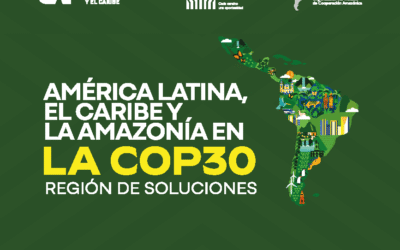The creation of the Biodiversity Data and Information Network (RIDB, in the Spanish acronym) will contribute to the continuous improvement of the generation, storage, integration, management, publication and use of data and information on biotic diversity in Ecuador.
Authors: Leonardo Buitrago and Ministry of Environment and Water of Ecuador (MAAE)
With the objective of having a general framework that allows for a comprehensive and coordinated inter-institutional management of information related to biodiversity in Ecuador, ACTO and the Ministry of Environment and Water of Ecuador (MAAE) have worked together in the creation of a Biodiversity Information and Data Network (RIDB), composed of entities from various sectors, related to the management and use of biodiversity information in the Republic of Ecuador. This Network, directly associated with the Biodiversity Information System (BIS-Ec), aims to ensure that good practices in biodiversity information management result in benefits for all citizens of the country, strengthening policies, agreements, technical standards, services and technologies, under the principles of transparency and access to data, good faith and responsibility in the use of information.
The BIDN is based on a regulatory framework that includes the Political Constitution of Ecuador, the Organic Environmental Code, the Regulations to the Organic Environmental Code and the Organic Law on Transparency and Access to Public Information. Its main objective will be to articulate the efforts of the actors of the ecosystem of entities and individuals involved in the generation, management, publication and use of biodiversity data and information in Ecuador, so that this information can be used by all Ecuadorian citizens, for the benefit of conservation and sustainable use of biodiversity.
Thanks to the consultancy KfW/JH/052/2020, developed in the framework of the Bioamazon project, the MAAE now has a clear proposal to be implemented in the RIDB regarding: 1) the management and governance model for biodiversity data and information in Ecuador; 2) a technical standard applicable to the National Catalog of Biological Objects (NCBO), which, following international standards, establishes guidelines for the incorporation of biodiversity data and metadata; and 3) a roadmap for the implementation of the RIDB´s governance and coordination bodies. These documents are in the process of being made official by the MAAE, so that they can be incorporated into national regulations and have direct and material application in activities related to biodiversity data and information management in Ecuador.
Biodiversity data and information management components associated with the implementation of the Biodiversity Information and Data Network (RIDB).

Figure 1. Biodiversity data and information management components.
In order to consolidate the RIDB effectively, it is still necessary to establish the tools and human resources that will make the services maintained by the MAAE and BIS-Ec operational, so that the Network can operate continuously, responding to the needs of users and data publishers. Likewise, the MAAE has been working in parallel with the support of ACTO to strengthen the technological infrastructure and web services, which are the basis for the BIS-Ec and the RIDB to operate properly, so as to ensure the storage, access, publication and use of data and information on biodiversity; results are expected soon in relation to these computer products.
The implementation of the RIDB should take place in a context that guarantees the democratization of information based on a participatory model, so that it can be consulted and used by any Ecuadorian under equal conditions, advocating the permanence and linking of new members to the Network.
In addition to the above, the consolidation of the RIDB and the effective management of biodiversity information in the country will enable its interoperability with global infrastructures, thus making it possible to comply with different international commitments that are transcendental for the advancement of science and the conservation of life on the planet, such as the Aichi targets established in the Convention on Biological Diversity (CBD), or the Sustainable Development Goals (SDGs) of the United Nations.
With all of the above, the creation of this Network and the documentation that supports it will allow good practices in biodiversity information management to generate benefits for all the inhabitants of Ecuador and that this information can be used in favor of the conservation and sustainable use of the country’s natural resources. These achievements will also support the processes that are being carried out in the Amazon region in the management of wildlife data, filling information gaps and serving as a reference for the development of this type of product, which is needed in other countries in the region.
The Network is scheduled to be launched in May 2020, as part of the Territorial Policy Agenda and in the presence of institutions and stakeholders involved in the conservation and sustainable use of biodiversity.
Published in the Bioamazon Newsletter, issue n. 8, March-April 2021.











